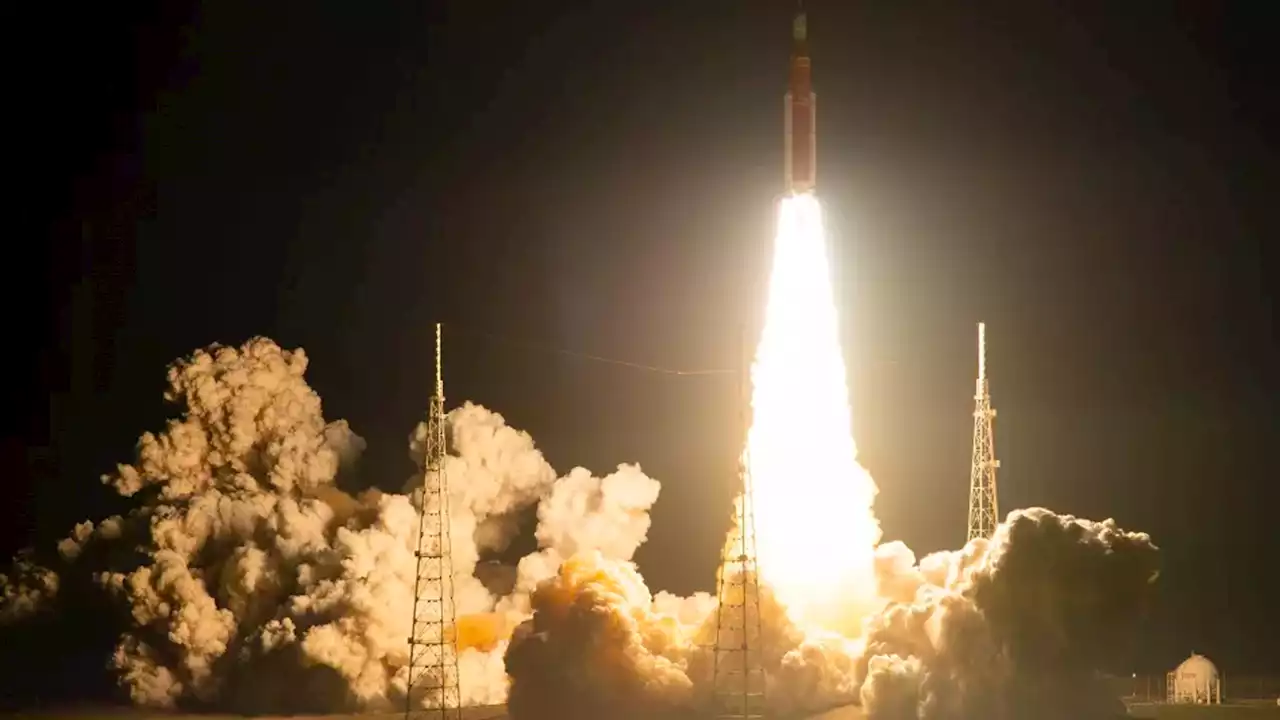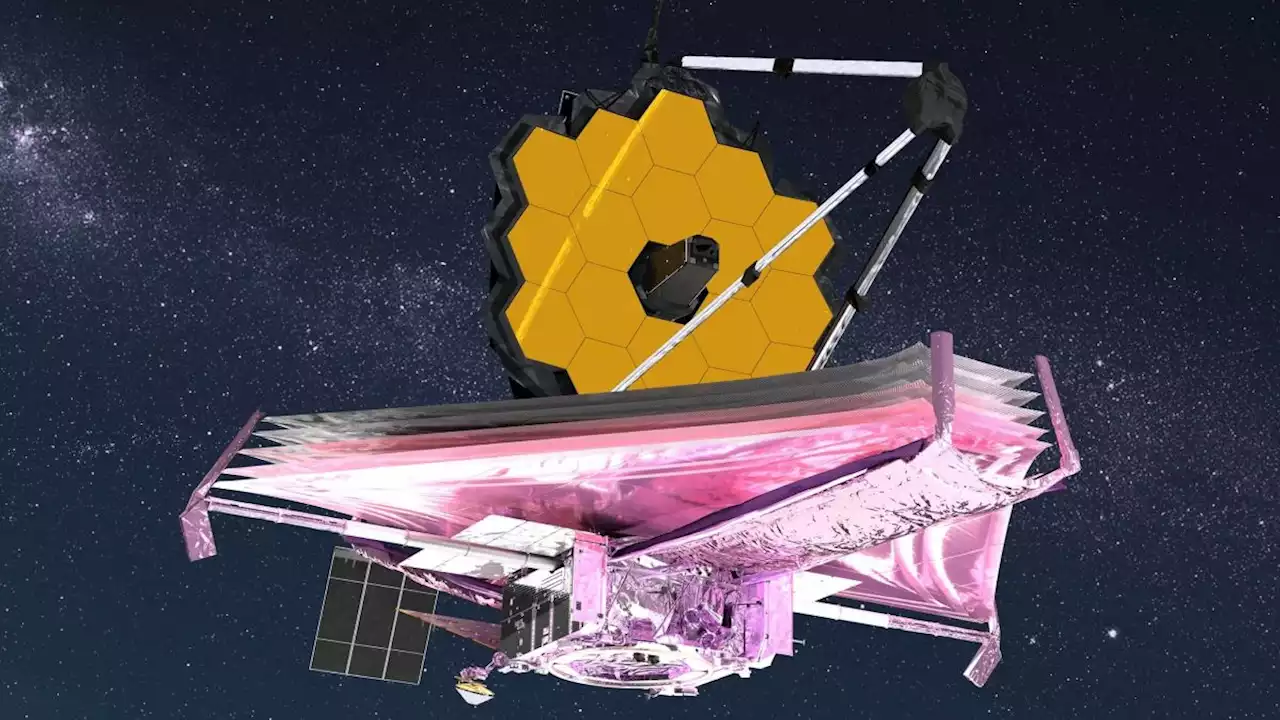A JWST observing program called PEARLS is studying the oldest galaxies and galaxy clusters in the Universe.
, which is how the gravity from massive structures like galaxy clusters can act as a lens, amplifying the light from objects behind the cluster. It allows astronomers to study objects at even more extreme distances.
PEARLS has captured one of the first medium-deep wide-field images of the cosmos. It features the North Ecliptic Pole region of the sky. The images show how the gravitational lensing from galaxy clusters in the foreground brings more distant objects into view. Some of the distant objects are ancient galaxies interacting with each other. Some of them are, extremely luminous regions at the center of galaxies, where black holes superheat material that falls toward them.
This image is of the El Gordo cluster, a cluster of galaxies chosen for its enormous mass. This image doesn’t show the center of the cluster, but it has a “rich collection of distant lensed source candidates,” according to the authors. STScI/WindhorstResearch assistant Jake Summers is one of the paper’s co-authors. “The JWST images far exceed what we expected from my simulations prior to the first science observations,” Summers said.
VV 191 features an elliptical galaxy on the left and a spiral galaxy on the right. The orange arc south of VV 191a is a distant galaxy that’s gravitationally lensed by VV 191a. The faint light in between stars and galaxies is also an object of interest to astronomers. Scientists cannot abide by unexplained light in the Universe. When astronomers work with images and remove all the light from known sources, like stars and galaxies, a tiny bit of light remains. They call it “ghost light,” and its source is still being investigated. Some astronomers call it the sky’s surface brightness, and it might be related to missing faint galaxies.
“I expect that this field will be monitored throughout the JWST mission to reveal objects that move, vary in brightness or briefly flare up, like distant exploding supernovae or accreting gas around black holes in active galaxies,” Jansen said.
Brasil Últimas Notícias, Brasil Manchetes
Similar News:Você também pode ler notícias semelhantes a esta que coletamos de outras fontes de notícias.
 The James Webb telescope gets glimpses of small, far-off planetsWhen the James Webb Space Telescope was first dreamed up, exoplanets hadn’t even been discovered yet. Now the observatory is showing astronomers what it can learn about planets orbiting other stars — including the small ones.
The James Webb telescope gets glimpses of small, far-off planetsWhen the James Webb Space Telescope was first dreamed up, exoplanets hadn’t even been discovered yet. Now the observatory is showing astronomers what it can learn about planets orbiting other stars — including the small ones.
Consulte Mais informação »
 The James Webb Space Telescope wasn’t the only big space news in 2022DART crashed into an asteroid, Artemis went to the moon and we got a pic of our galaxy’s monstrous black hole. Space was a busy place this year.
The James Webb Space Telescope wasn’t the only big space news in 2022DART crashed into an asteroid, Artemis went to the moon and we got a pic of our galaxy’s monstrous black hole. Space was a busy place this year.
Consulte Mais informação »
 8 ways the James Webb Space Telescope is revolutionizing astronomyKeith Cooper is a freelance science journalist and editor in the United Kingdom, and has a degree in physics and astrophysics from the University of Manchester. He's the author of 'The Contact Paradox: Challenging Our Assumptions in the Search for Extraterrestrial Intelligence' (Bloomsbury Sigma, 2020) and has written articles on astronomy, space, physics and astrobiology for a multitude of magazines and websites.
8 ways the James Webb Space Telescope is revolutionizing astronomyKeith Cooper is a freelance science journalist and editor in the United Kingdom, and has a degree in physics and astrophysics from the University of Manchester. He's the author of 'The Contact Paradox: Challenging Our Assumptions in the Search for Extraterrestrial Intelligence' (Bloomsbury Sigma, 2020) and has written articles on astronomy, space, physics and astrobiology for a multitude of magazines and websites.
Consulte Mais informação »
 James Webb Space Telescope back to science operations after glitchMeghan is a senior writer at Space.com and has more than five years' experience as a science journalist based in New York City. She joined Space.com in July 2018, with previous writing published in outlets including Newsweek and Audubon. Meghan earned an MA in science journalism from New York University and a BA in classics from Georgetown University, and in her free time she enjoys reading and visiting museums. Follow her on Twitter at meghanbartels.
James Webb Space Telescope back to science operations after glitchMeghan is a senior writer at Space.com and has more than five years' experience as a science journalist based in New York City. She joined Space.com in July 2018, with previous writing published in outlets including Newsweek and Audubon. Meghan earned an MA in science journalism from New York University and a BA in classics from Georgetown University, and in her free time she enjoys reading and visiting museums. Follow her on Twitter at meghanbartels.
Consulte Mais informação »
 JWST Has Spotted Never-Before-Seen Star Birth in The Carina Nebula, And It's GloriousThe powerful James Webb Space Telescope is a mighty technological tool.
JWST Has Spotted Never-Before-Seen Star Birth in The Carina Nebula, And It's GloriousThe powerful James Webb Space Telescope is a mighty technological tool.
Consulte Mais informação »
